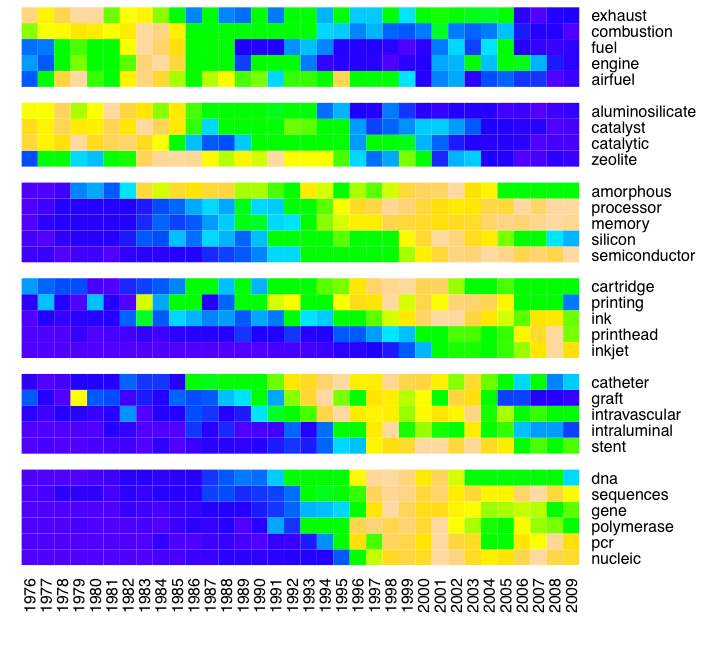Evolution of Technology
The primary focus of current Reed Artificial Life Lab research centers around studying the dynamics of technological evolution and identifying the key drivers of innovation. Our primary data set for this purpose is the United States Patent Record. We analyze the text and citations of patents granted during the period 1976-2010. Our work involves the use of both novel and canonical techniques to quantify and visualize the evolution of technology.
Our investigation of the evolution of technology is motivated by an analogy with biological evolution. A patented invention is viewed as an organism, and different inventions compete for adoption by users in various niches. The spread of inventions in niches is analogous to the Darwinian process of natural selection (we make no assumptions here about how close that analogy is). When a new patent cites prior art (i.e., earlier patented inventions on which it depends and builds), we consider the earlier patent to have spawned an incipient daughter species.
From patent citations, it is possible to reconstruct the entire phylogeny of the evolving network of patented inventions. The entire set of patent records is analogous to the entire fossil record, except that the patent record is virtually complete and mostly accurate and unambiguous.
The quality and size of the patent data set along with the parallels between biological and technological evolution has motivated our research. We believe that if we can gain greater insight into the evolution of technology we may be able to understand processes fundamental to all forms of evolutionary change.

Previous Papers:
ALIFE XII 2010 - Evolution of Word Clouds in Patented Technology (Download)
ALIFE XII 2010 - Darwinian Evolution of Culture as Reflected in Patent Records (Download)
ALIFE XI 2008 - Quantifying creative symbiosis: a lexical analysis of the evolution of technology as reflected in patent records (Download)